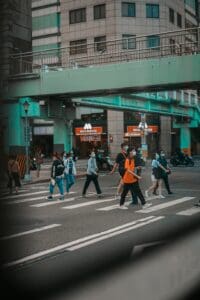By Bryan Walsh
Experts in philanthropy are gradually coming around to the idea that simply giving poor people cash — rather than services or in-kind benefits — is the most efficient way to make progress on severe poverty.
The big picture: The divergent economic experiences between rich and poor countries during the pandemic has shown the value of directly giving money to those in need.
- With extreme poverty in developing countries spiking during the pandemic, direct cash giving is more important than ever.
What’s happening: GiveDirectly — a charity that pioneered the practice of sending money to people in poverty, no strings attached — recently announced it sent $1,000 each to more than 178,000 U.S. households in need during the pandemic, with plans to reach another 20,000 over the next few months.
- GiveDirectly works with Propel — a company that provides software that helps Americans digitally manage food stamps and other benefits — to identify households in need and quickly send out money.
- The direct cash giving model’s greatest advantage is its “exceptional efficiency,” says Alex Nawar, GiveDirectly’s U.S. director, who estimates that 98–99 cents of every dollar donated to the charity’s U.S. pandemic program goes directly to giving, with little required for overhead.
Between the lines: GiveDirectly’s program, as successful as it was, is a drop in the bucket compared to the billions in direct stimulus checks and expanded jobless benefits from the federal government that have flowed to Americans during the pandemic.
- That aid — much of it cash — not only prevented much of the massive economic pain Americans could have suffered during the pandemic, but it actually helped reduce the U.S. poverty rate in 2020.
- But what both private philanthropy and government aid demonstrate is the power of rapidly distributed cash to shield the needy from catastrophe and actually lift people out of poverty.
What they’re saying: “It was really exciting to see the U.S. embrace cash as a first solution for the financial security problems people are facing through the pandemic,” Nawar says.
- Globally, there has been a 148% increase in cash social programs during COVID-19, with a total of 782 cash transfer programs being implemented or planned across 186 countries.
- “I think there’s a lot of room for both governments and NGOs and other kind of disaster responders to increase how often we use cash, because we know it’s more efficient than delivering in-kind aid,” says Nawar.
By the numbers: Poverty declined in the U.S. during the pandemic but not in the poorest countries in the world.
- The number of people in extreme poverty — defined as households spending less than $1.90 a day per person — had fallen from 1.9 billion people to 648 million people in 2019, even as the global population increased by 2.5 billion people.
- Extreme poverty levels were projected to fall to 537 million people by 2030, but the pandemic interrupted this trend, with the number increasing for the first time since 1997 to an estimated 588 million people.
- “There are people who might have exited poverty in the last few years or the last decade through growth and all of the progress that has been made, and unfortunately, have fallen straight back in,” Vishal Gujadhur, deputy director of development policy and finance at the Gates Foundation, told Fast Company recently.
How it works: During the pandemic, GiveDirectly worked with the government of Togo — where half the citizens live below the poverty line — to identify and distribute millions of dollars in cash aid to those in need.
- To speed the process up, GiveDirectly used satellite images to identify tell-tale images of poverty, like houses with thatched roofs rather than metal ones, as well as mobile phone data, employing an algorithm to find people who more often made short, cheap calls — another sign of poverty.
Details: A 2018 review of 165 studies of cash-giving programs found it tends to increase spending on food and other goods — dispelling the idea that much of the aid would be wasted by recipients — while not reducing recipients’ willingness to work.
- A 2019 study by GiveDirectly of its cash-transfer program in Kenya found positive spillovers even to those who didn’t receive money, with little effect on price inflation.
The other side: “Cash can’t buy everything,” as Drake University economist Heath Henderson wrote this year.
- Cash assistance can’t always help with the structural issues that keep people in poverty, including the lack of access to COVID-19 vaccines in very poor countries.
The bottom line: Even if money isn’t a cure-all, when it comes to tackling poverty as quickly as possible, “it can be as simple as expanding cash,” says Nawar.
Original article: https://www.axios.com/givedirectly-cash-aid-poverty-pandemic-5806c1e6-aaff-4b41-bc17-98514d4e2431.html





















